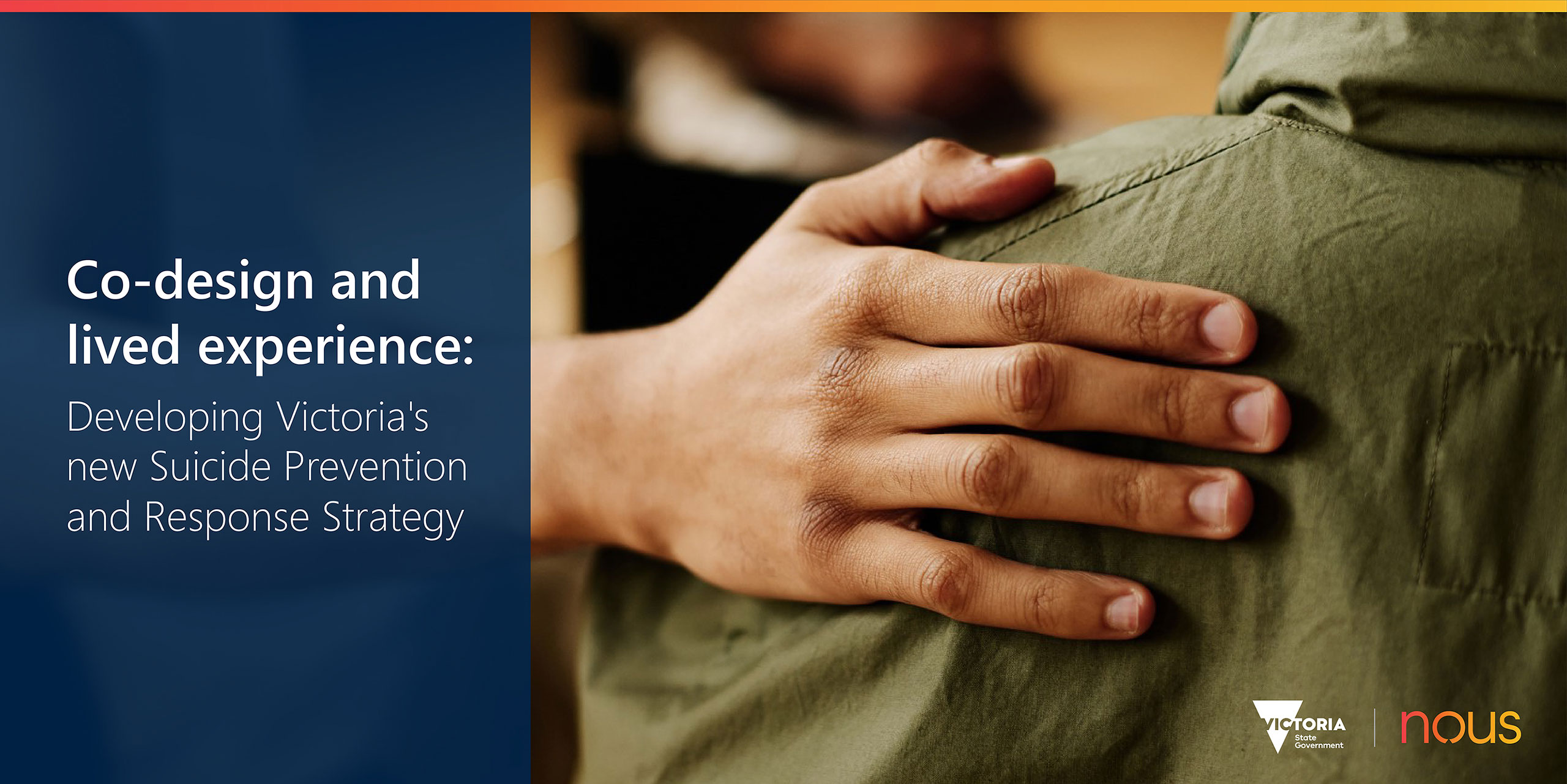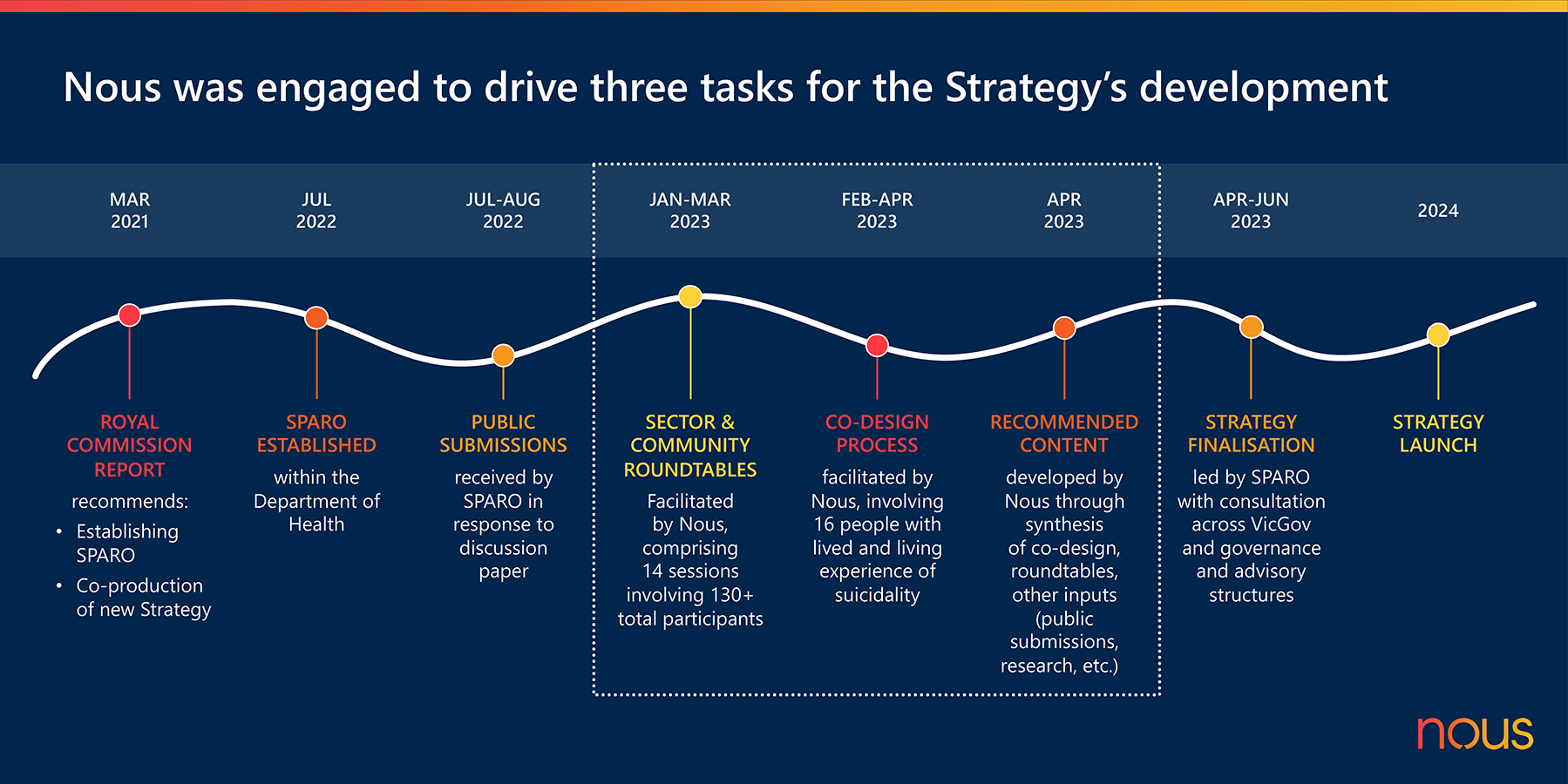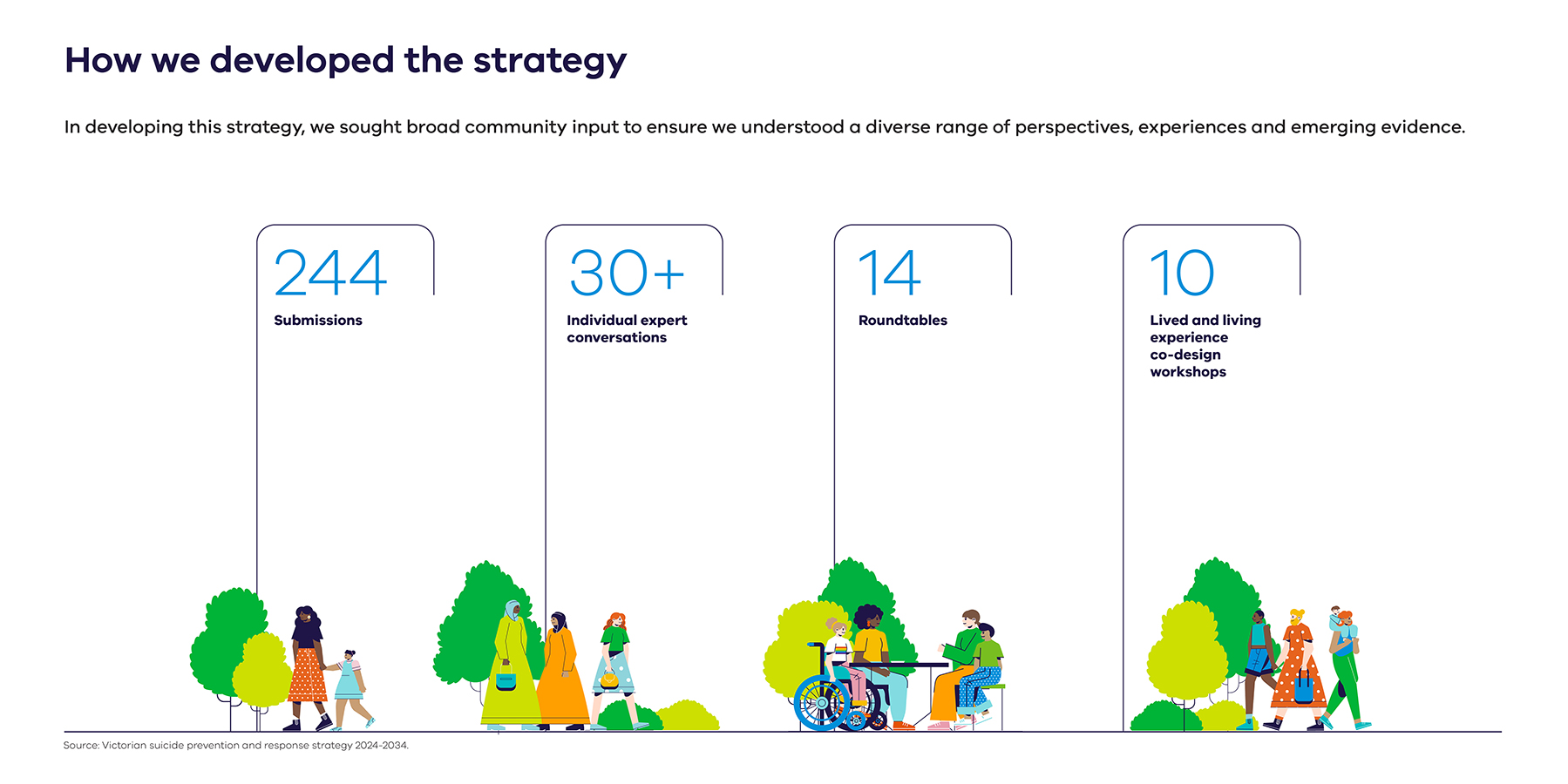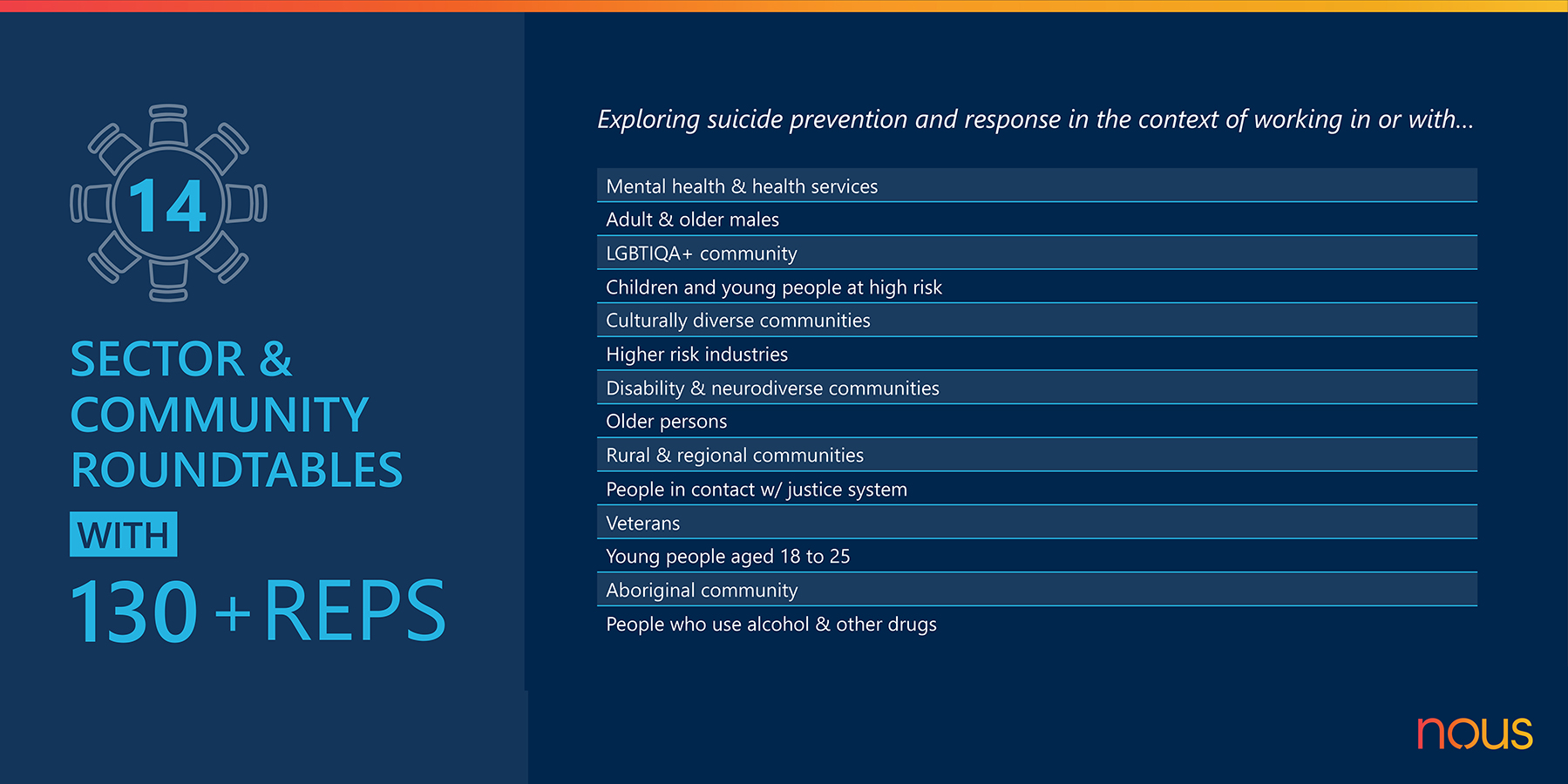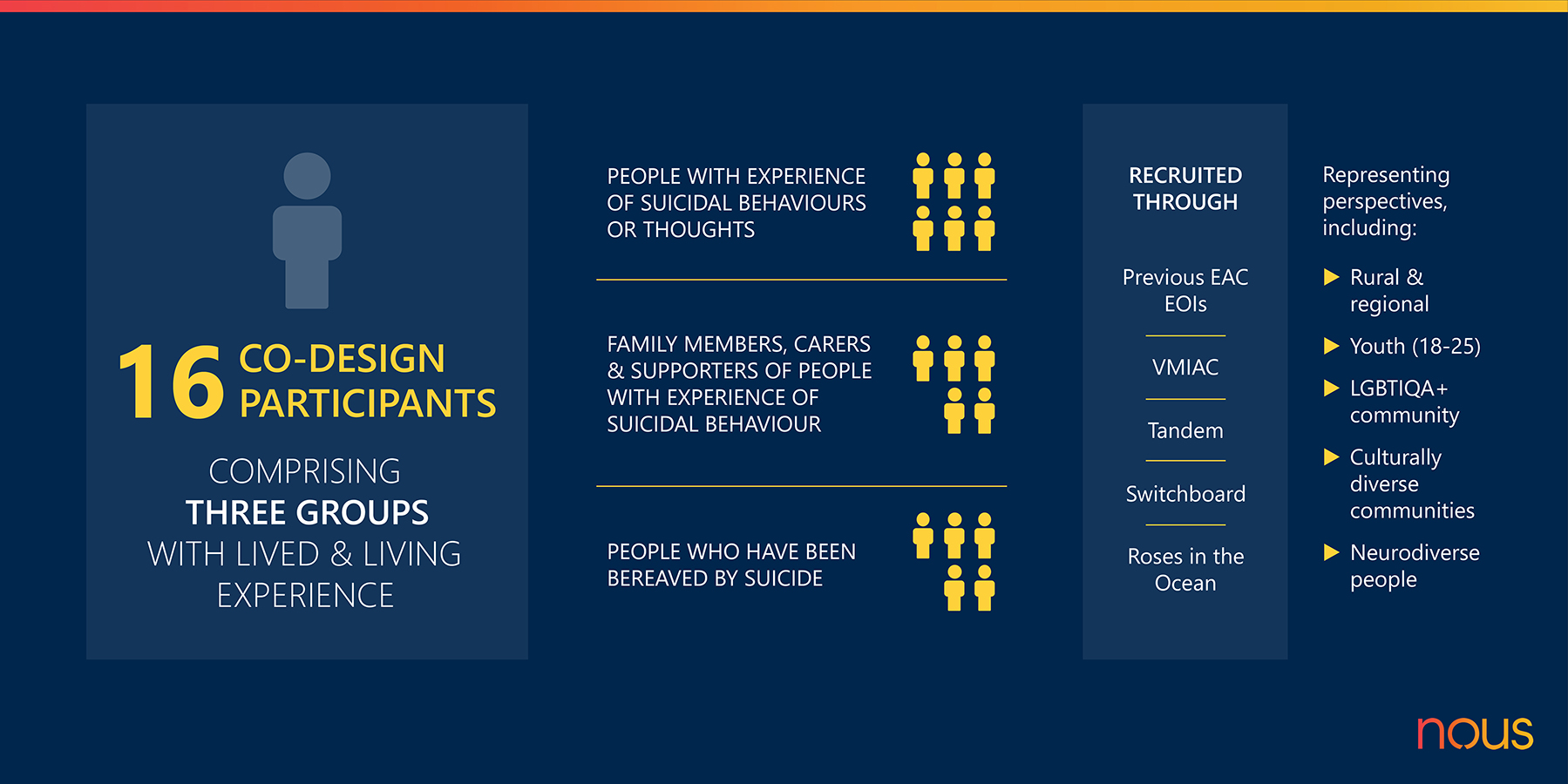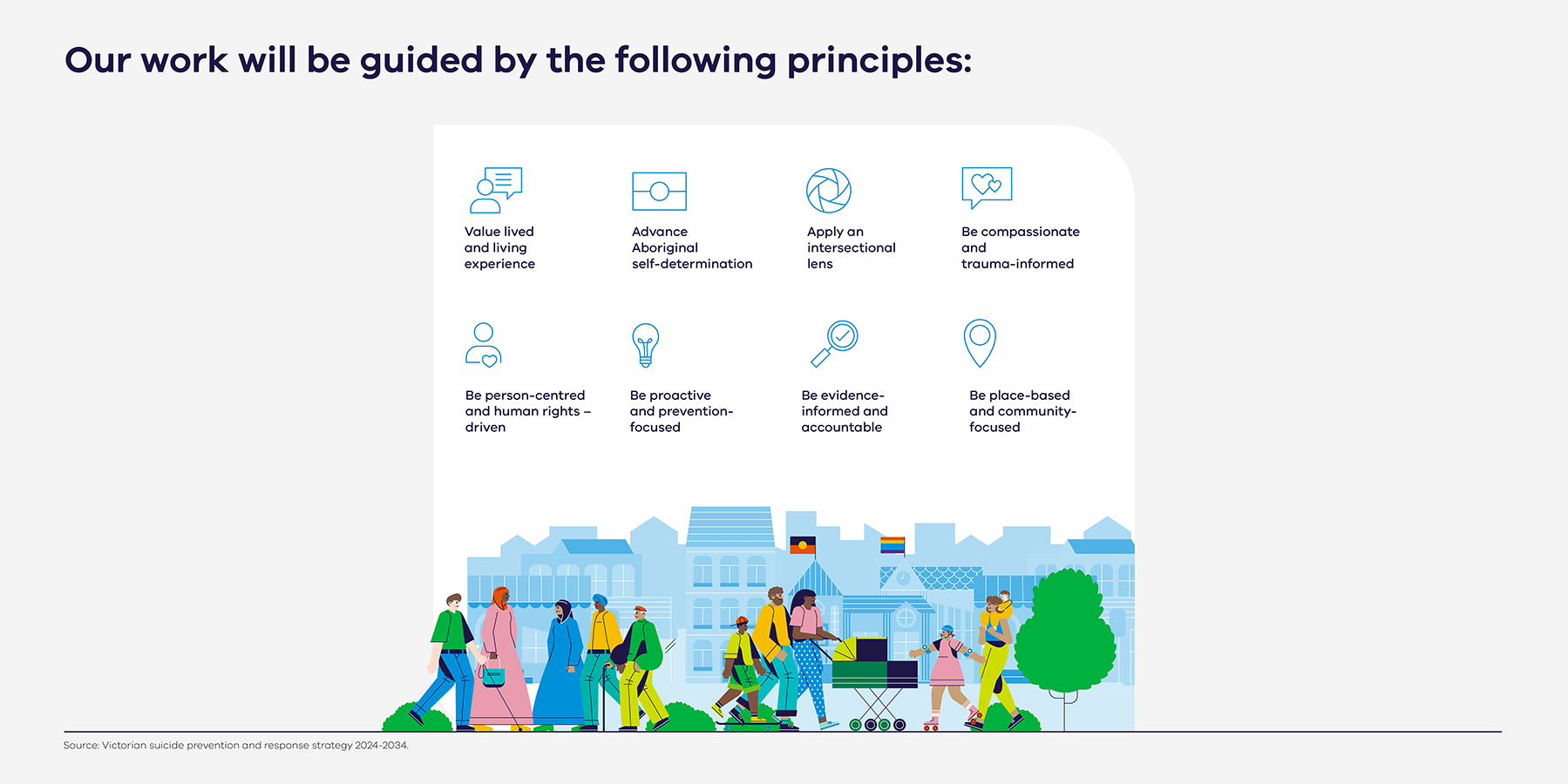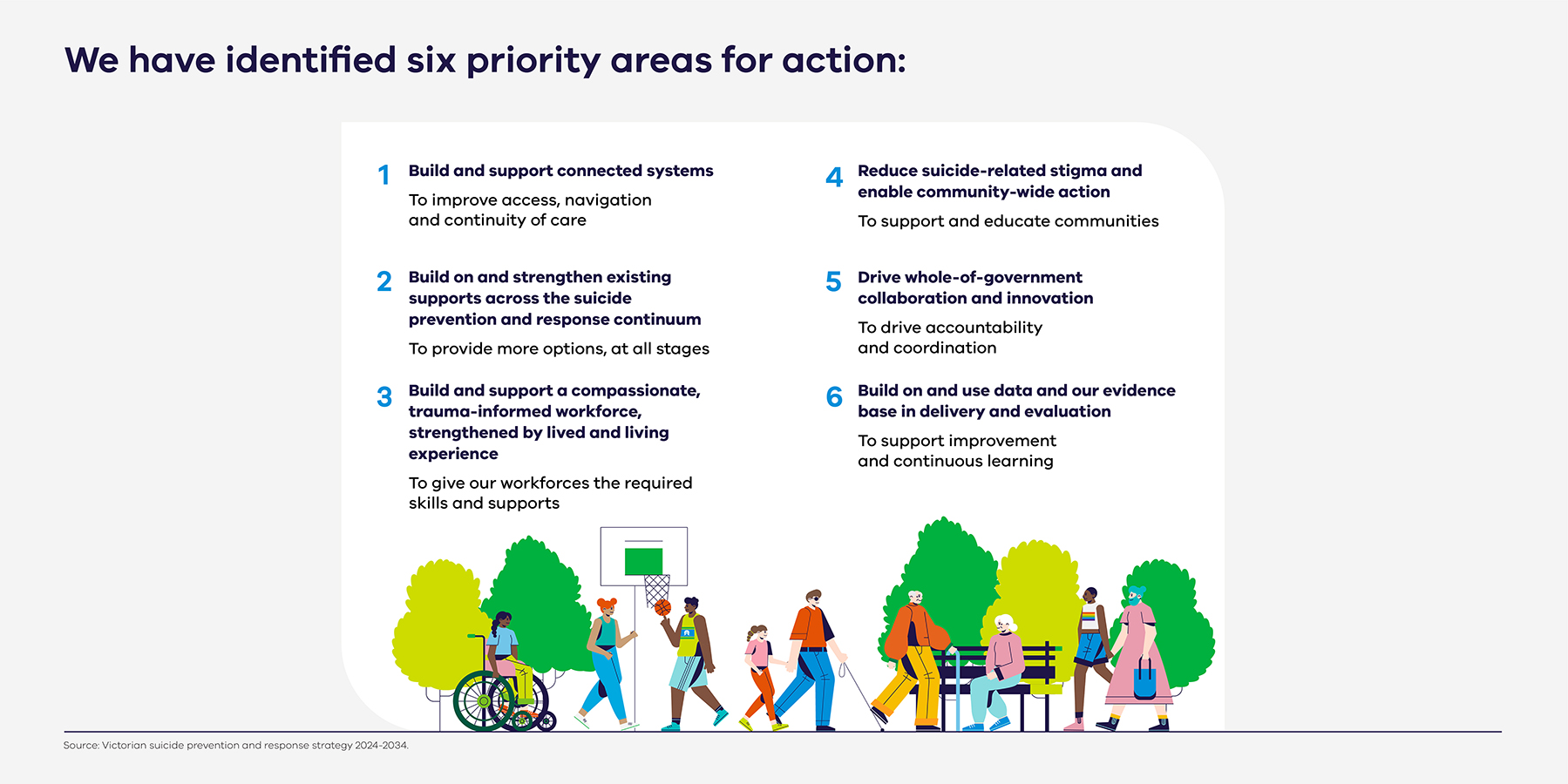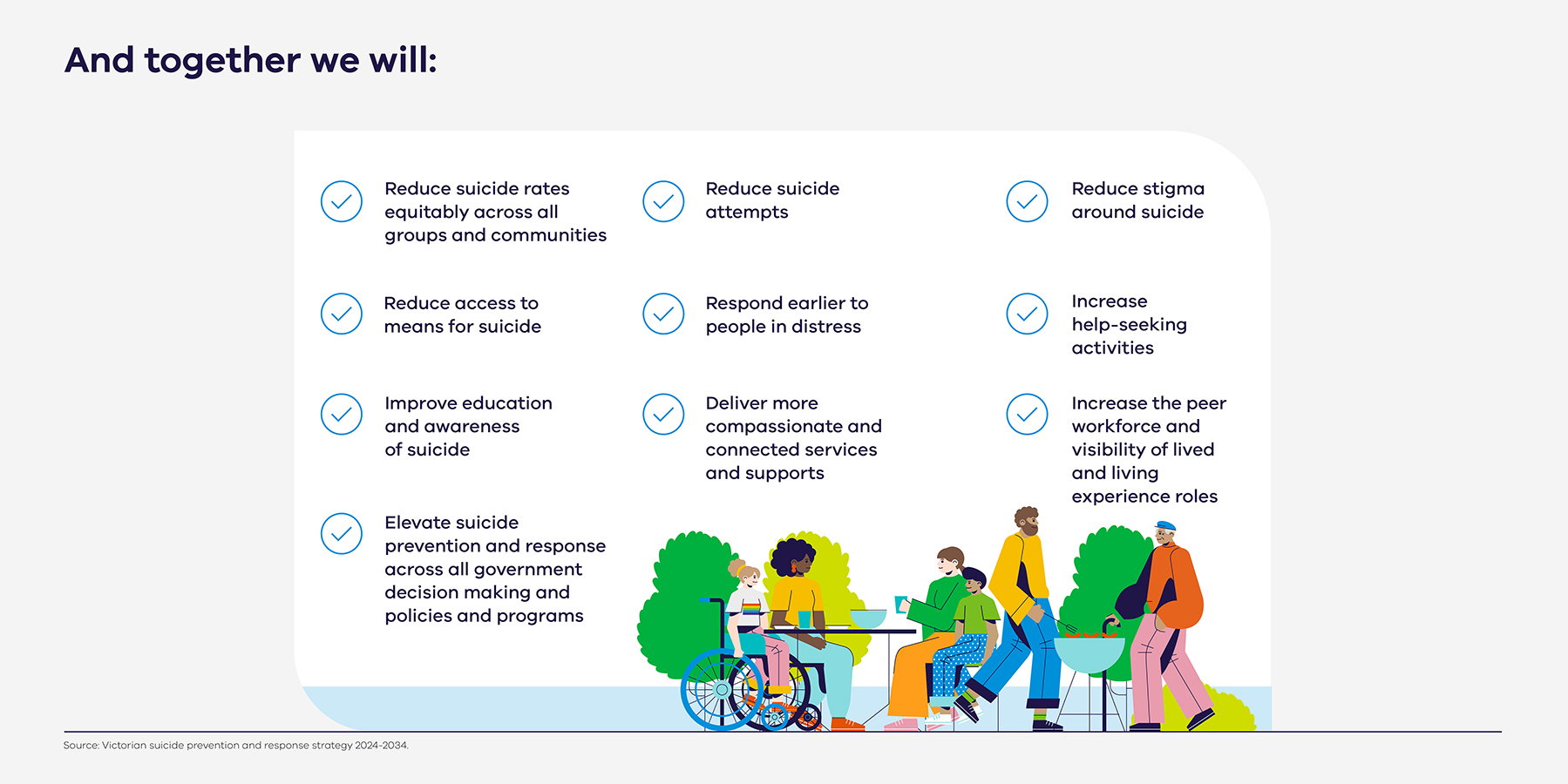The design process was thorough and inclusive, based on a genuine belief in, and commitment to, the value of lived experience. Our approach ensured that the voices of those most impacted by suicide shaped the Strategy’s vision, principles, priority areas, and initiatives.
The design process commenced after targeted conversations between SPARO and key stakeholders, alongside a public consultation process via Engage Victoria. This was followed by extensive discussions, including 14 virtual sector and community roundtables attended by more than 130 participants from diverse backgrounds, including Aboriginal and Torres Strait Islander peoples, LGBTIQA+ individuals, veterans, and residents of rural and regional areas.
A virtual co-design process was undertaken with three groups of people with lived and living experience of suicide, including people who have survived a suicide attempt, live with suicidal thoughts, care for or support someone who is suicidal, or are bereaved by suicide. The Strategy was further shaped by consultation with clinicians, people who work with communities disproportionately impacted by suicide, and other experts.
A trauma-informed approach was integral to the process, involving elements such as embedding a Lived and Living Experience Adviser within the team, engaging an independent counselling service, establishing a distress protocol, and using the same facilitators consistently in order to build trust with participants. This approach aimed to do no further harm while drawing upon people’s experiences to generate ideas that will lead to improved outcomes.
The final design was implemented through close collaboration between Nous Group and SPARO and included a whole-of-Victorian Government accountability framework and evaluation advice, ensuring knowledge transfer from the design process to the team that would implement the Strategy.
The project exceeded the brief by setting a new standard for this type of work, genuinely empowering lived and living experience stakeholders to shape the state’s policy objectives and goals.

